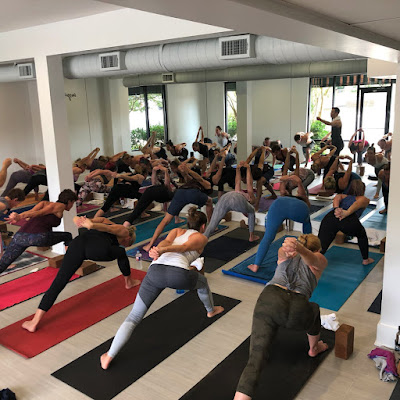Copyright Free Content Curation Challenge
 |
| Photo https://unsplash.com/@rexcuando Curating musical content which complies with being copyright free, royalty free or available for free use is often challenging. I've written about music in class vs no music in class previously, but this topic has risen back up into my radar. Our studio owner has recently stopped paying the nearly $900/year fee to ASCAP which allowed us to play licensed music in the yoga studio. The majority of our classes are taught with no music, but the ASCAP licensing is needed even if the music being played happens before or after a yoga class is led. I've begun using searches in Spotify to attempt to curate copyright free playlists for our classes. It seems that not all the songs that come up with a "copyright free" or "royalty free" search query in Spotify are actually copyright/royalty free. I've had several copyright strikes on my audio class recordings posted to YouTube for tracks that were results for copyright/royalty free searches. What is also interesting is the copyright strikes I've received claiming the song that was playing in the background as belonging to an artist/record label when it was definitevly not that song by the artist/label claming that track as theirs. This happened recently for the Journey Into Power 505 class where I used a playlist of copyright free beats in Spotify. Playlist link. The Orchard Music claims a copyright strike against this class recording at the 32:57 minute mark claiming that this song is Long Beach by Beatmasta. I know that this isn't the song playing at this point in the class (it is actually "Beat 1" from a Royalty Free Hip Hop Beat Album on Spotify). I did some searching online to try to find "Long Beach" so I could hear it and compare. Fun fact, The Orchard Music doesn't even allow streaming of this recording in the United States. In the past I've had spurious copyright claims laid agains the three OMs heard at the beginning of each class recording as being День 3 -- Новые начинания, and me making a crystal bowl ring as being Requiem (claimed by Believe Music). These copyright claimswere easy to dispute as I knew that there was no music at all in those classes receiving the copyright strike. It is harder now that some of my classes have what I believe to be is copyright free music in them. It seems that I can't always be sure of what my search results in Spotify tell me. I know I could download music from The Free Music Archive or the You Tube Music Library but the ease of using AirPlay from a Spotify playlist has been an irresistable low barrier to entry. This does encourage me to get back to work on making my own original music, putting it in Spotify and thereby being able to 100% refute any copyright claim on a class of mine going forward. Stay tuned for advancements in this space regarding copyright free music made by yours truly. Disputing incorrect copyright strikes would be more meaningful if my YouTube channel were monitized, but it isn't. All the content I publish is free of any monitization. The copyright strikes I receive are a mere annoyance as they have no financial impact to me, but I find it irritataing that a record label is claming rights to what is not theirs in hopes of making some money off of the content I've uploaded. I can point to two very excellent musicians who have a slew of albums/eps/songs available for streaming in Spotify: Chad Crouch and Karl Casey. Very different ends of the spectrum and both of them are extremely prolific! |









